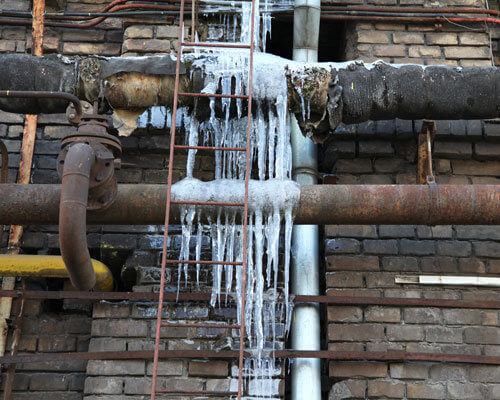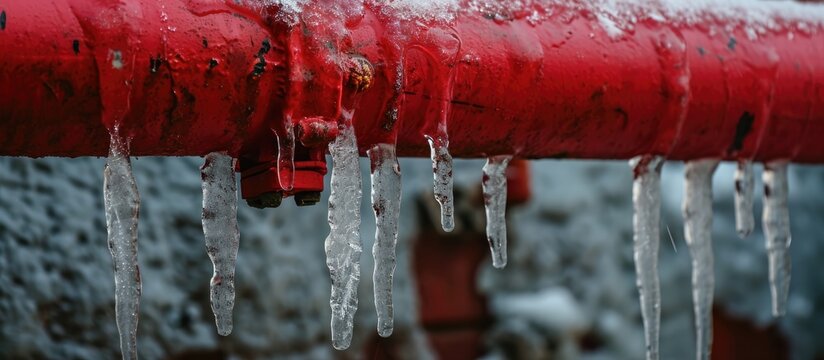Critical Approaches for Avoiding Frozen Pipes in Winter
Critical Approaches for Avoiding Frozen Pipes in Winter
Blog Article
This article which follows involving How to prepare your home plumbing for winter weather is quite stimulating. Have a go and draw your own ideas.

Cold weather can damage your plumbing, especially by freezing pipes. Here's how to avoid it from happening and what to do if it does.
Intro
As temperatures drop, the risk of frozen pipes increases, possibly bring about pricey repairs and water damages. Understanding just how to stop frozen pipes is vital for home owners in cold environments.
Avoidance Tips
Protecting prone pipelines
Cover pipelines in insulation sleeves or make use of heat tape to shield them from freezing temperature levels. Focus on pipelines in unheated or external areas of the home.
Heating strategies
Keep interior areas adequately heated, specifically areas with pipes. Open up cupboard doors to allow warm air to distribute around pipes under sinks.
Exactly how to recognize icy pipelines
Search for lowered water circulation from faucets, unusual smells or noises from pipelines, and noticeable frost on revealed pipes.
Long-Term Solutions
Architectural adjustments
Consider rerouting pipelines far from outside wall surfaces or unheated locations. Include added insulation to attic rooms, basements, and crawl spaces.
Updating insulation
Purchase high-grade insulation for pipes, attics, and wall surfaces. Correct insulation helps preserve constant temperatures and minimizes the threat of icy pipelines.
Protecting Outdoor Plumbing
Garden hose pipes and outside taps
Detach and drain pipes yard hose pipes before winter season. Mount frost-proof faucets or cover outside faucets with insulated caps.
Understanding Frozen Pipelines
What creates pipelines to freeze?
Pipelines freeze when exposed to temperatures below 32 ° F (0 ° C) for prolonged durations. As water inside the pipelines ices up, it increases, putting pressure on the pipe wall surfaces and potentially triggering them to break.
Threats and damages
Frozen pipes can result in water supply disruptions, building damage, and costly repairs. Burst pipes can flooding homes and create considerable architectural damage.
Indicators of Frozen Piping
Recognizing icy pipes early can prevent them from rupturing.
What to Do If Your Pipes Freeze
Immediate actions to take
If you think frozen pipelines, maintain faucets available to eliminate pressure as the ice melts. Make use of a hairdryer or towels taken in hot water to thaw pipes slowly.
Verdict
Protecting against frozen pipes needs positive procedures and quick feedbacks. By understanding the causes, signs, and preventive measures, home owners can shield their pipes during cold weather.
5 Ways to Prevent Frozen Pipes
Drain Outdoor Faucets and Disconnect Hoses
First, close the shut-off valve that controls the flow of water in the pipe to your outdoor faucet. Then, head outside to disconnect and drain your hose and open the outdoor faucet to allow the water to completely drain out of the line. Turn off the faucet when done. Finally, head back to the shut-off valve and drain the remaining water inside the pipe into a bucket or container. Additionally, if you have a home irrigation system, you should consider hiring an expert to clear the system of water each year.
Insulate Pipes
One of the best and most cost-effective methods for preventing frozen water pipes is to wrap your pipes with insulation. This is especially important for areas in your home that aren’t exposed to heat, such as an attic. We suggest using foam sleeves, which can typically be found at your local hardware store.
Keep Heat Running at 65
Your pipes are located inside your walls, and the temperature there is much colder than the rest of the house. To prevent your pipes from freezing, The Insurance Information Institute suggests that you keep your home heated to at least 65 degrees, even when traveling. You may want to invest in smart devices that can keep an eye on the temperature in your home while you’re away.
Leave Water Dripping
Moving water — even a small trickle — can prevent ice from forming inside your pipes. When freezing temps are imminent, start a drip of water from all faucets that serve exposed pipes. Leaving a few faucets running will also help relieve pressure inside the pipes and help prevent a rupture if the water inside freezes.
Open Cupboard Doors
Warm your kitchen and bathroom pipes by opening cupboards and vanities. You should also leave your interior doors ajar to help warm air circulate evenly throughout your home.

I have been very serious about How to prepare your home plumbing for winter weather and I'm hoping you enjoyed reading the new page. Those who liked our page plz remember to share it. Thank you for your time. Return soon.
Book Service Report this page